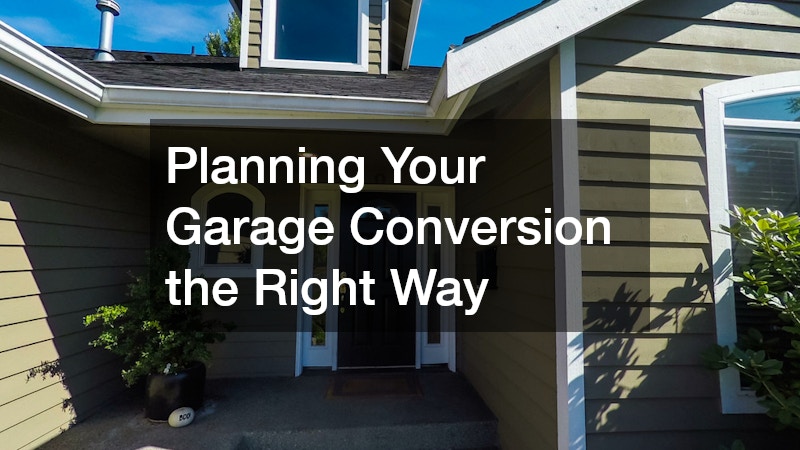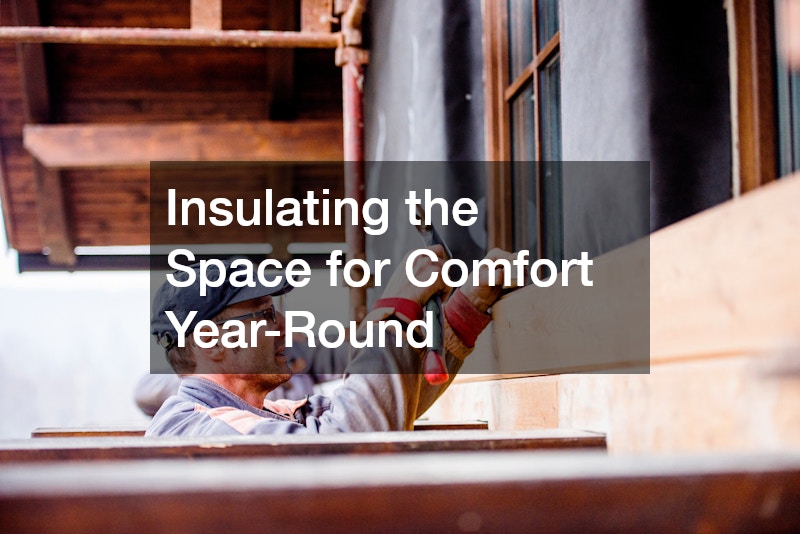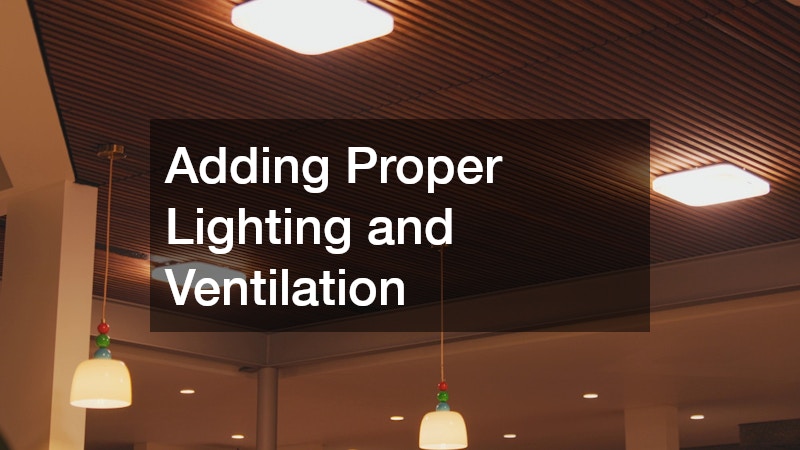Your garage may be one of the most underutilized areas of your home, but with the right approach, it can become a stylish and functional living space. Whether you’re dreaming of a cozy guest suite, a quiet home office, or a lively family room, a garage conversion offers endless possibilities. Transforming this space involves planning, smart design choices, and thoughtful finishes that align with your lifestyle. In this blog, we’ll explore 10 practical tips to help you turn your garage into a living space and create a comfortable, welcoming part of your home.

Planning Your Garage Conversion the Right Way
The first step in transforming your garage into a livable space is having a clear plan. Consider what purpose the room will serve—will it become a guest bedroom, home office, gym, or entertainment area? Each option requires different design choices, so identifying the function up front helps guide your decisions. It’s also wise to think about the long-term value a conversion could add to your home. While adding more square footage is appealing, the design should remain consistent with the rest of the house to feel cohesive.
Budgeting is another critical aspect of planning. Conversions can range from simple cosmetic upgrades to full remodels with plumbing, insulation, and electrical work. Create a realistic budget that accounts for both construction materials and professional labor. You’ll also want to factor in hidden costs such as permits, utility upgrades, or structural modifications. Consulting with a roof specialist or designer at this stage ensures your project is feasible within your budget and timeline. A well-thought-out plan lays the foundation for a smooth transformation and prevents costly missteps later.
Checking Building Codes and Permits Before You Start
Before hammering a single nail, it’s essential to research your local building codes and permit requirements when you turn your garage into a living space. Many municipalities treat garage conversions as significant renovations, which means they must comply with regulations covering safety, structural integrity, and zoning. Failing to follow these rules can result in fines or force you to undo the work later. It can also affect your ability to sell the home, as unpermitted conversions may not count toward the property’s square footage.
Start by visiting your city or county’s planning office to learn about the specific requirements in your area. You may need permits for electrical upgrades, plumbing, or structural changes such as adding windows or removing walls. Some neighborhoods with homeowners’ associations also have additional rules you’ll need to follow. If this step feels overwhelming, hiring local plumbers and other necessary contractors who are familiar with local regulations can save you time and frustration.
While permits might feel like an extra hurdle, they actually protect you in the long run. Inspections confirm the work is safe, which is especially important when it comes to electrical wiring, ventilation, and insulation. Addressing these items upfront ensures your new living space is not only beautiful but also legal and secure.

Insulating the Space for Comfort Year-Round
Garages are typically designed for storage, not comfort, which means they often lack proper insulation. If you want to turn your garage into a living space, like a bedroom, office, or playroom, keeping it warm in winter and cool in summer is a must. Start with the walls—insulation batts or spray foam can help regulate temperature while also reducing outside noise.
The garage door is another weak point when it comes to insulation. If you’re keeping the door, consider adding an insulated version or covering the inside with rigid foam panels. If you plan to invest in garage door replacement with a wall and windows, make sure the new structure is well-insulated and sealed. Don’t forget the ceiling and floor—both can contribute to drafts and energy loss if not properly addressed.
Adding insulation not only makes the space more livable but can also lower your energy bills. By preventing heat loss, your HVAC system won’t have to work as hard to maintain a consistent temperature. You might even consider installing a mini-split system for independent HVAC with the help of a heating service. With thoughtful insulation companies, your garage conversion will feel like a natural extension of your home rather than an afterthought.
Choosing the Best Flooring for Your New Room
The flooring you choose can set the tone for the entire garage conversion. Since most garages have concrete slabs, you’ll want to select a material that adds both comfort and style. Laminate and vinyl flooring are popular choices because they’re durable, easy to install, and resistant to moisture. For a warmer, cozier feel, carpet or engineered hardwood can make the space feel more like a traditional living room.
Before installing any flooring, it’s important to prepare the concrete base. This may include sealing cracks, leveling uneven surfaces, and adding a vapor barrier to prevent moisture from seeping up. Skipping these steps can lead to flooring damage over time.
Think about the room’s purpose when making your decision to turn your garage into a living space. A home gym may require rubber flooring for shock absorption, while a guest room benefits from plush carpeting. You can also incorporate area rugs for added warmth and design flexibility. Ultimately, the right flooring transforms the cold, industrial feel of a garage into a welcoming living space that complements the rest of your home.

Adding Proper Lighting and Ventilation
Lighting and ventilation play a huge role in making your converted garage feel like a true living space. Garages typically rely on a single overhead bulb, which isn’t enough for a bedroom, office, or entertainment area. Consider layering your lighting with recessed ceiling fixtures, wall sconces, and floor lamps to create a comfortable and flexible environment. Natural light is equally important—if possible, install larger windows or even a skylight to brighten the room.
Ventilation is just as critical as lighting. Garages often lack sufficient airflow, which can lead to musty odors or poor air quality. Adding operable windows or a ceiling fan can significantly improve circulation. For a more advanced option, connect the room to your home’s HVAC system or install a ductless mini-split unit. With the help of a heating and AC company, this ensures a steady flow of fresh air and helps maintain a consistent temperature.
By paying attention to both lighting and ventilation, you’ll turn your garage into a living space that feels more like a welcoming interior room than a converted garage. A bright, airy environment not only enhances comfort but also boosts the functionality of the space for everyday use.
Designing Walls and Ceilings for a Finished Look
Bare garage walls and exposed rafters don’t exactly scream “cozy living space.” To achieve a polished look, you’ll need to finish the walls and ceilings just like you would in the rest of your home. Start with hiring a drywall company for installation, which creates a smooth, paintable surface. Adding texture or accent walls can bring personality and warmth into the room.
The ceiling deserves just as much attention. Options include drywall, beadboard, or even wood planks for a more rustic feel. Don’t forget to incorporate recessed lighting or ceiling fixtures while finishing the surface. This is also the perfect time to run electrical wiring or install insulation if you haven’t already.
Soundproofing is another smart investment, especially if you plan to use the room as a bedroom or home office. Adding acoustic panels or sound-dampening drywall helps block outside noise. With finished walls and ceilings, the garage no longer feels like an afterthought—it blends seamlessly with the rest of your home’s design.

Installing Windows and Doors for Natural Light
Windows and doors play a crucial role when you turn your garage into a living space, especially when upgrading your roof with the help of a roof specialist. Replacing the old garage door with a framed wall and large windows can instantly brighten the space and provide better insulation. If you’d prefer to keep the garage door for flexibility, consider upgrading it to an insulated model with built-in windows.
Interior and exterior doors also make a difference. Adding a door that connects seamlessly to the rest of your home ensures easy access, while an exterior entry door provides safety and convenience. French doors or sliding glass doors leading to your yard can create a stylish, open feel while letting in even more natural light.
Beyond aesthetics, windows and doors are essential for ventilation and energy efficiency. Make sure they’re double-paned and well-sealed to keep drafts out and comfort in. By carefully selecting the right options when turn your garage into a living space, you’ll bring both practicality and beauty to your garage conversion, making it a space where people actually want to spend time.
Creating Functional Storage Solutions Within the Space
One challenge with converting a garage is losing storage. Most homeowners use their garages for tools, sports equipment, or seasonal items. Rather than eliminating storage altogether, you can incorporate smart solutions into your new living area with the help of siding contractors.
Built-in shelving, storage benches, or wall-mounted cabinets can provide space without taking away from the room’s functionality. For example, a window seat with hidden storage doubles as seating and organization. Closet systems or wardrobes can also help keep clutter out of sight, especially if the space is serving as a bedroom or guest room.
If you need to store bulkier items, consider adding overhead racks or creating a small utility closet within the conversion. Another option is building an outdoor storage shed to handle items that no longer fit in the converted garage. By thoughtfully designing storage solutions, you’ll keep the space organized and comfortable while still accommodating your household’s needs when you turn your garage into a living space.

Selecting Furniture That Fits Your Garage Layout
Furniture can make or break the functionality of your garage conversion. Because garage dimensions often differ from traditional rooms, it’s important to choose pieces that fit comfortably within the layout. Oversized furniture can overwhelm the space, while multi-functional pieces help maximize utility.
Consider a sofa bed if the room will serve as a guest space, or a fold-out desk if it’s doubling as a home office. Modular furniture allows you to reconfigure the room as your needs change, while built-in pieces like shelving or entertainment units save floor space.
Style is also key. Pick furniture that complements the rest of your home so the new room feels like a natural extension rather than an isolated area. Use rugs, curtains, and accent décor to soften the space and make it feel more welcoming. With the right furniture choices, your garage can transform into a stylish and highly functional living area.
Personalizing the Space to Match Your Lifestyle
The final step to turn your garage into a living space is to make it uniquely yours. Personal touches help the room reflect your personality and lifestyle. If it’s a family room, consider adding a gallery wall of photos or a large sectional sofa for movie nights. For a home gym, hang motivational art and install mirrors to enhance the workout environment.
Décor elements like paint color, lighting fixtures, and textiles bring warmth and character to the space. Earth tones and soft fabrics can make a guest room feel cozy, while bold colors and modern furniture create a vibrant home office. Don’t forget functional accessories such as blackout curtains for bedrooms or shelving for a craft room.
Think of the converted garage as a blank canvas. Whether you want it to be a quiet retreat or a bustling entertainment hub, tailoring the design to your lifestyle ensures you’ll actually use and enjoy the new space. Personalization is what transforms a basic remodel into a meaningful extension of your home.
Start Your Renovation Today!
Turn your garage into a living space; it’s more than a renovation—it’s an opportunity to expand your home’s functionality and create a space tailored to your needs. From insulation and flooring to furniture and personal touches, every detail with the help of a custom home builder plays a role in making the room feel inviting and complete. With careful planning and attention to comfort, storage, and design, your garage can seamlessly blend into the rest of your home. By following these 10 tips, you’ll unlock the hidden potential of your garage and enjoy a versatile, valuable space that enhances your everyday life.









